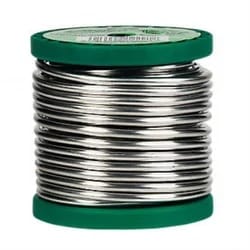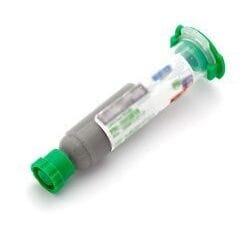Description
Understanding Soldering Lead and Its Importance in Electronics
In electronics assembly and repair, solder lead is one of the most essential materials for creating durable and conductive joints. It allows components to bond securely with minimal resistance, ensuring that electrical circuits function smoothly and reliably over time. Whether used in hobby projects or industrial applications, selecting the right solder makes a noticeable difference in performance and longevity.
A solder wire typically consists of a mixture of tin and lead. The most common types are 60/40 solder wire (60% tin, 40% lead) and 63/37 solder wire (63% tin, 37% lead). These compositions melt at relatively low temperatures, making them easy to handle and ideal for precision work. The 63/37 alloy, also called eutectic solder, melts and solidifies at a single temperature, producing bright, smooth joints with minimal imperfections.
To make the process more efficient, manufacturers often produce rosin core solder and flux core solder, both of which contain flux within the wire. Flux removes oxidation from the metal surfaces and promotes better adhesion, eliminating the need for separate flux application. This feature is particularly useful in electronics soldering, where clean and accurate connections are critical.
The thickness of the soldering wire also influences the result. Fine wires such as 0.5mm are ideal for delicate printed circuit boards, while thicker wires like 1mm suit larger joints and connectors. Choosing the correct size and alloy ensures smooth flow and consistent bonding.
A lead solder wire provides predictable results and excellent wetting characteristics, which is why it remains a preferred choice among technicians. Although lead-free alternatives are gaining popularity for environmental reasons, traditional tin lead solder wire is still widely valued for its ease of use and stable performance in both repair and assembly tasks.
High-quality soldering material offers several benefits — quick melting, low spatter, and strong joints that resist corrosion. The right composition maintains the mechanical strength and electrical integrity of the connection, even under temperature fluctuations and long-term use.
Proper handling and safety are also important when working with soldering lead. Since lead can be toxic if mishandled, it is recommended to use adequate ventilation, wash hands after soldering, and avoid eating or drinking in the workspace. Those who prefer eco-friendly solutions can explore lead-free solders, typically made of tin, silver, and copper alloys.
In summary, choosing the correct soldering lead, wire type, and flux composition ensures reliable, clean, and long-lasting solder joints. Understanding the properties of each material helps both professionals and hobbyists achieve precise results and maintain the performance of their electronic and electrical projects.







